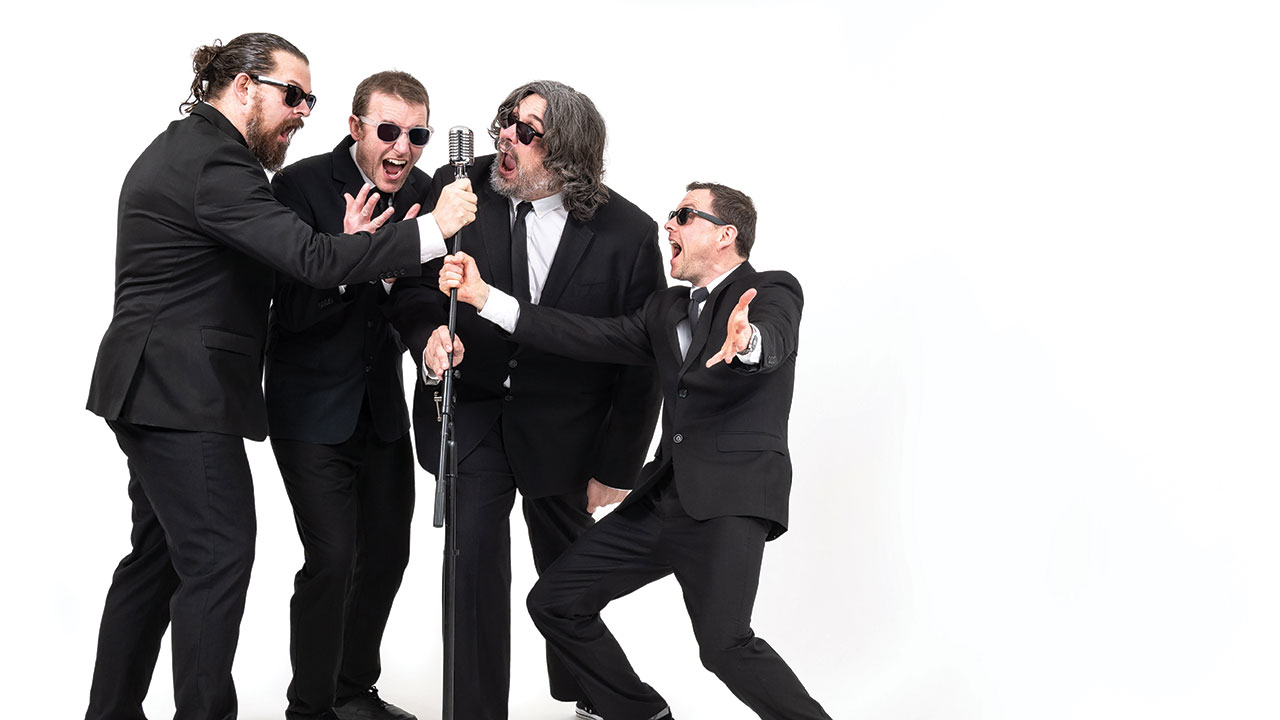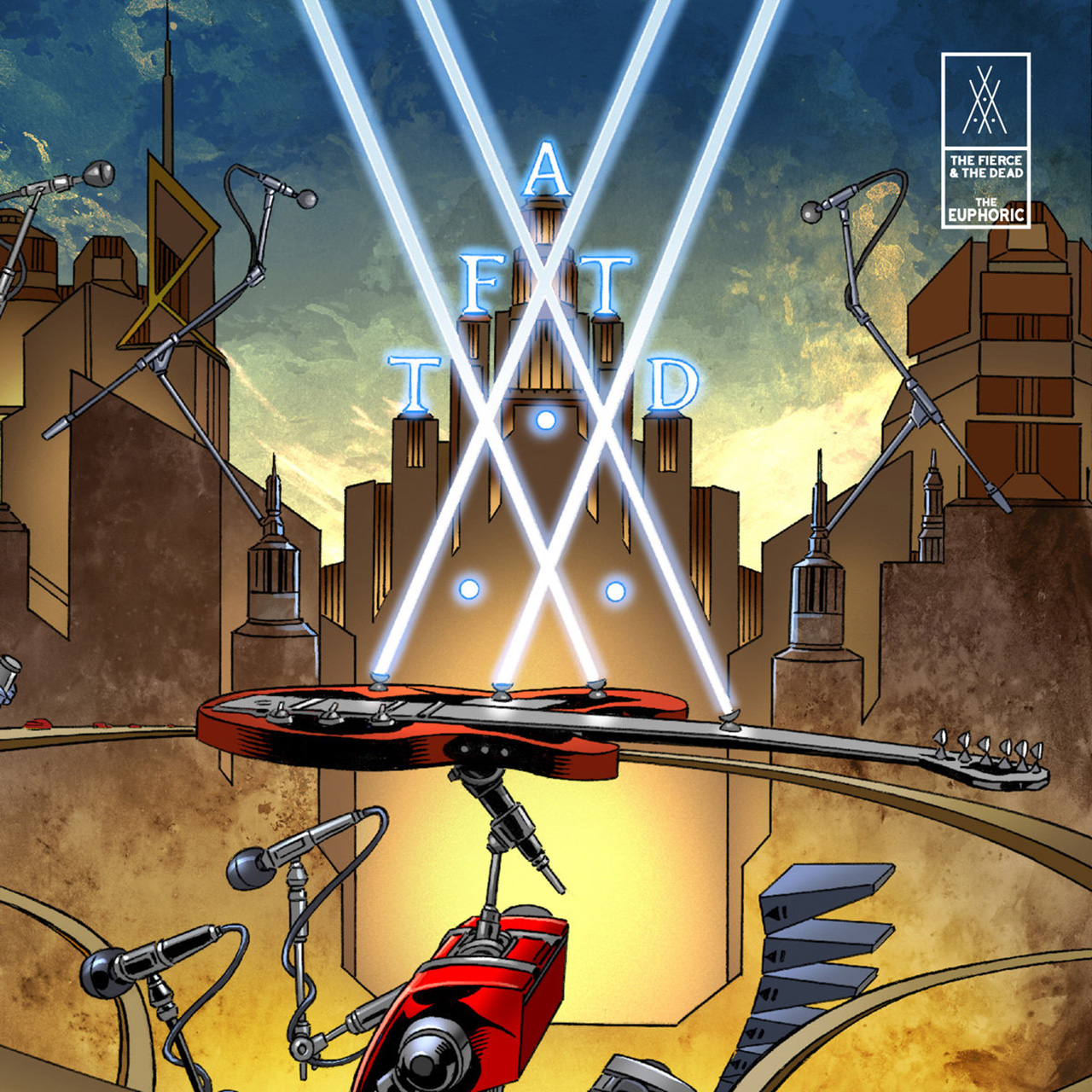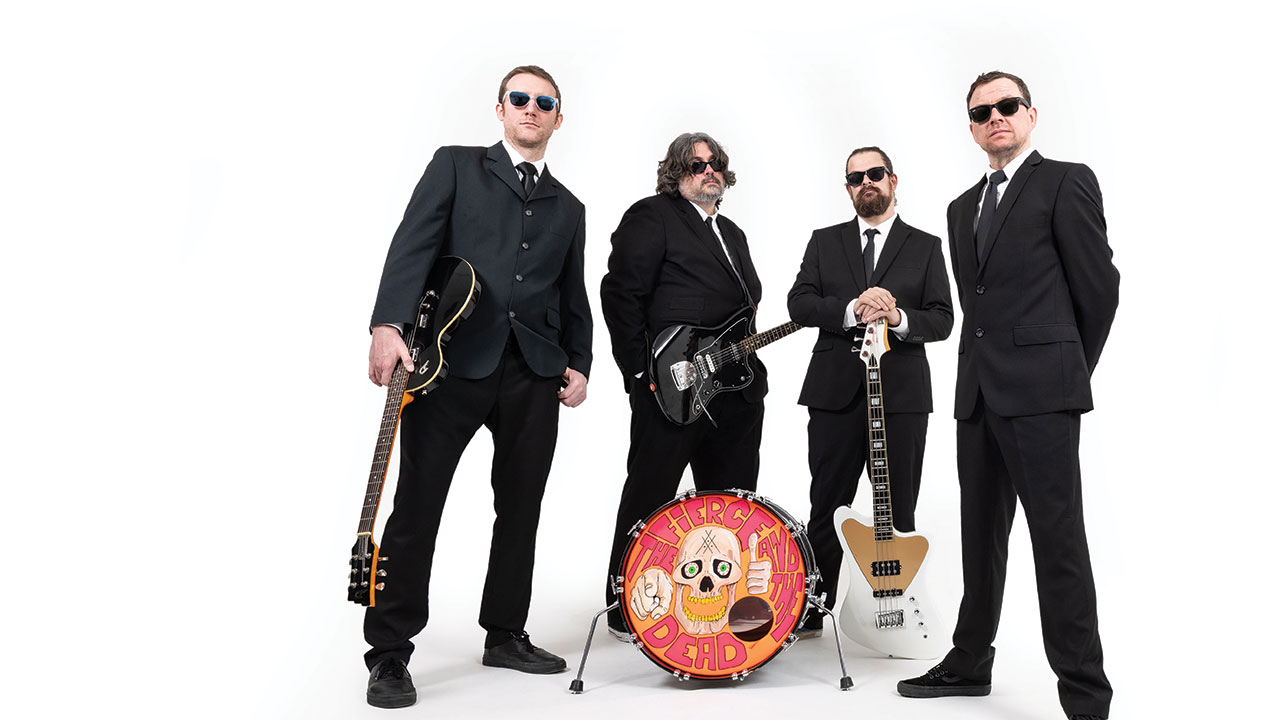
Last May, The Fierce And The Dead played RoSFest, in Gettysburg, Pennsylvania. The visa application progress was long and arduous, and to prove their identity they actually scanned in and sent off every feature they’d ever had in Prog. Initially they were denied, but after a second attempt and a stressful interview at the American embassy, they were finally rubber-stamped. That’s a lot of trouble and a long way to go for one show, even one of the premier neo/symphonic events. TFATD were something of a wild card on a bill headlined by Neal Morse. Even as they went onstage, at 11am before a room of nearly 800 people, the four Northampton boys had no clue how their odd, fluid blend of post-, math- and prog rock would go down.
Two tunes into their set, guitarist Matt Stevens broke a string. Rather than reach for his back-up axe, he pulled a new string out of his back pocket and restrung his Telecaster, right there and then. Kev Feazey, the band’s bassist and producer-in-chief, sounds proud as he recalls it. “Me and Steve [Cleaton, their other guitarist] just had a little chat with the audience while Matt did it. I think they wondered what we were doing, because they’re used to these big, professional prog bands and here are these four English blokes saying, ‘Hello! How are you?’ But this is what we do, it puts everybody at ease and we went down surprisingly well. Live shows should be joyous, inclusive – fun, happy and up, and RoSFest was one of the best we’ve ever done.”

And eight years into their career, they’ve done a few. Looking back at their CV, the breadth of the shows they’ve done is unusual: slots at HRH Prog, ArcTanGent, Summer’s End and, just this April, Hawkwind’s Easter event, Hawkeaster. Then there’s their diverse catalogue of support dates: PFM, Slayer’s Dave Lombardo, The Aristocrats, Frost*. The night before we meet them, they supported Stick Men at The Robin 2 in Bilston. Pat Mastelotto offered to help TFATD drummer Stuart Marshall set up, and tuned his snare for him. Later, Tony Levin complimented Stevens on their sound, and he still can’t quite believe it happened. “It was just nuts! King Crimson were my heroes when I was a teenager, and Tony Levin’s just told me my band’s got a good sound. They were nice guys, no ego, just there for the music. When I get a bit older, I want to be as cool as they are.”
Among the Stick Men’s crowd was a comforting contingent of TFATD T-shirts, as there was at Ramblin’ Man back in 2016, when they opened the whole festival, almost by mistake. “On the main stage it was bands like Whitesnake, Black Stone Cherry and Europe,” says Stevens, “but our stage was the first one to open and we were the first act on. All of a sudden everyone came over to watch us – there were people right over the horizon. We’d had a really long soundcheck so we sounded good, and we went down weirdly well with this more traditional classic rock audience.”
As a solo artist, Stevens was renowned as an early adopter of social media as a promotional tool. Similarly, this band’s following has built organically online over recent years. “It always amazes me to turn up somewhere you’ve never been before and there’s a bloke in your T-shirt,” he says. “Our fanbase is this really cool, culty thing. They’re all connected, everybody knows each other. It’s grown to the point that they’re there for us whether we’re playing with Frost* or at a space rock festival like Sonic Rock Solstice.”
As we speak, pre-orders for their joyful new album The Euphoric are healthy, and they’re on course to cover production costs. And damn right too: their third long-player is not just TFATD’s strongest record to date, but something of a high-water mark for modern, thinky, instrumental prog. While it’s not noodly, it’s packed with sublime musicianship, richly detailed compositions and textured arrangements, all with a retro, 80s aesthetic. The Euphoric captures the big personality of the band, their geeky cultural fetishes and musical influences past and present, from Crimson to Faith No More to St Vincent.
Many of their gigs were earned off the back of the 2015 EP Magnet, and as a result, they had less time to focus on writing the follow-up. The Euphoric was assembled sporadically throughout 2016, recorded over 2017 and finished this February. This time, they spent a few quid on studios, at the insistence of Kev Feazey, who’s a sound engineer by trade.
“I know what a good studio can do for you psychologically as a musician,” he tells us, “and I wanted this band to have that experience, to live in that space, with a choice of five snare drums, different cymbals, where you’re just there to be creative and all the phones are off. It’s more expensive and it’s a gamble, because we’re not Fleetwood Mac! You can get by on goodwill and energetic live shows, but in the end it’s important to create good art. Without that as a foundation, everything else is pointless. We decided to remove all the time limits and get it right.”
“We’ve never focused on the details as much as we have on this one,” adds Stevens. “We pared the sound down on the other records rather than chucking lots into it, but this time we’ve experimented a lot more. We tried to get interesting guitar sounds, worked more on the effects, the reverbs, and we changed the way we tuned, all to get us to think in a different way. And for the first time synths are central to some of the tracks. We were trying lots of new things.”

Opening the album is the concussive one-two hit of Truck and 1991, both crystallisations of everything TFATD are about – chugging riffs, melodic interludes, rocky guitar earworms. Muscly and smart, now with added keys. “You can tell from Truck that we’re big fans of Can,” says Feazey. “I love playing that live. That big riff bounces along, we let it boil and then there’s a big punch at the end, It’s really satisfying – you can feel the energy come up in the room. I think we really nailed that, and 1991.”
Named after their teenage Year Zero, the latter tune was inspired by the four’s ‘psychedelic’ adolescence, growing up together as friends in Rushden, Northampton, listening to Ozric Tentacles, Soundgarden, Nirvana et al, doing what boys do. Their considerable musical chemistry is down to this communal heritage.
“Take Dug Town,” says Stevens. “That’s led by a Mopho, a cut-down version of the [classic 80s synth] Prophet 5, a very 80s sound. We’d never done a synth-led track before, and there’s an indie rock ending to it, like Pavement but heavier. Because we’ve been friends so long, we can say, ‘Can you do that Pavement bit but with more of a Radiohead guitar tone? Stu, can you make the toms a bit more Jane’s Addiction?’”
“Or,” Feazey chips in, “‘I’ve got this chord sequence – I was thinking of it like the Melvins. Let’s go!’ Matt came in with this John Carpenter-style keyboard sequence for the title track. We’d all been listening to Pond and Jesu. So somebody looks at it from a different point of view and you end up with something different.”
As well as Carpenter, there’s a hint of ambient pioneers Boards Of Canada in that title piece. Its eerie synth line edges in and out of tune creepily, woozily, then the headbanging kicks in and we get nearer Faith No More territory. Not all that euphoric on the surface, but then the album title wasn’t meant that way. “The Euphoric is all about making people happy and bringing them joy through music,” says Stevens, “especially with the world the way it is at the moment. Even if I go to see Slayer or something, there’s still that joyous, euphoric feeling you get from the experience. And if you don’t make it enjoyable, then what have you got? Music should be inclusive, should bring everybody in.”
With its Atari-esque vector graphics, the nostalgic video to Truck will certainly bring joy to 40-something listeners who haunted their local arcade as a kid. Mark Buckingham’s retro-futurist artwork lends to the vibe, and 48k – a cosmic/metallic mash-up featuring a spoken-word cameo from labelmate Rob Ramsay – takes its name from the RAM capacity of that era-defining personal computer, the ZX Spectrum. “We’re into all that nerdy stuff,” says Stevens. “Computer games like Chuckie Egg, old horror films, box sets like Stranger Things. All the stuff we grew up with as kids. When you’re in difficult times, one of the things you do is go back to childhood, to those comforting things. I think that’s why all this is so popular.”
But far from regressing musically, the band seem more honed and refined. Plangent arpeggio lines intertwine at the start of Dancing Robots, leading into funk rock, Rage Against The Machine-style fire and – the clincher – some whopping Melvins-esque guitar notes that drone, but, refreshingly, don’t outstay their welcome. The brief, motorik Cadet Opal has a fiendish time signature and the tight, gated guitar hooks of Verbose evoke one of the band’s current shared favourites, St Vincent. There’s a whiff of Floyd to the beautifully ornate midsection of closer Parts 7 And 8.
“That’s Steve,” says Stevens. “He’s our secret weapon. Steve has a far better ear for detail than I have. He does things I’d never have thought of, like on that tune. He does this specific run that varies and grows, and it’s so subtle. I don’t do subtle.”
“We’ve really tried to make each song its own thing,” offers Feazey, “to have its own sound, and the fact it’s us playing it is what gives it continuity. And because we’ve really worked on the material, we don’t have to overplay. I can say to myself, ‘This riff is great, all I have to do is play it and this room will go.’”
Again, it’s a broad section of rooms that have been going, be they full of math-rockers, space-rockers or neo-phytes. At one point their lack of a singer might have been seen as a limiting factor. Au contraire, says Stevens.
“With no vocals, you get away with more, people can’t pigeonhole you as much. I mean, not many bands have done Summer’s End, ArcTanGent and have also supported Hawkwind! If we had a guy grunting or singing melodically, either one would stop us getting other types of gigs, unless they’re a Mike Patton type who can do everything.
“And there was no grand plan to it. It’s just when we started the band, none of our friends could sing! But all these big gigs have been really good for us. They’ve forced us to up our game. Big crowds don’t freak us out any more. We just love playing and making people happy.”
Along with the album, there’s a DVD on the way of that RoSFest set, they’re braving the visa process again with a view to going back to the States, and doors are opening for them in Europe. Not bad for four mates from Rushden who started playing for fun. “Our expectations were always low!” says Stevens. “We do this for the joy of it. It’s snowballed in a way we never could’ve expected. Steve said recently that if it all stopped now, we’ve already achieved more than we ever could’ve imagined.”
And, maybe most joyous of all, Feazey reckons their flush of success has made their friendship stronger. “When we were over for RoSFest we were driving through Gettysburg one evening and it all hit me. For me to have this experience with three guys I’ve known since we were 15… it was such a bonding experience. Our music brought us here. It’s amazing.”
This article originally appeared in issue 87 of Prog Magazine.







